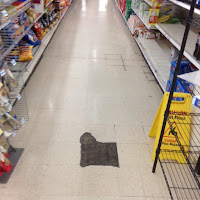The long-awaited Sears bankruptcy filing occurred overnight, and there are reasons to be skeptical. I am relying mainly on the AP story (“U.S. Sears files for bankruptcy protection amid plunging sales, massive debt” at CBC News) since it contains details not found in other early reports. These are the four main points going against Sears and Kmart:
- History has not been kind to U.S. retailers that file for bankruptcy reorganization at the start of the Christmas shopping season. Those filing in January after a Christmas-season disaster have a shot at survival. A retailer that goes into bankruptcy before Christmas is too deep in debt to put merchandise on the shelves. The first example that comes to mind is Toys ‘R’ Us, a year ago, and of course, that retail chain is long gone.
- The bankruptcy plan has only half of the financing needed to keep stores open through December. “More financing to be arranged later” translates to “We’re so broke we can’t even go bankrupt.”
- The reorganization plan is, in so many words, “Stay the course.” Only 142 Sears and Kmart stores will close immediately, in two retail chains that may not have even one profitable store between them. Sears wants to continue the slow, cautious dismantling that has been the plan at Sears for the last ten years, resulting in a loss in almost every quarter. The CEO who was the architect of this downward spiral remains with the company. There is nothing to persuade creditors, investors, suppliers, or a bankruptcy judge that meaningful change is on the way.
- Most of the assets are gone. Sears lists $6.9 billion in assets, compared to $11.3 billion in liabilities. In the past 11 years, Sears has sold its best store locations. The Canadian subsidiary went into bankruptcy and has already closed. The Land’s End and Craftsman names are gone, the Sears catalog a distant memory. The assets that remain will have to be scrutinized. Some may be less valuable than estimated. Many are surely encumbered in one way or another. There may not be enough assets available to provide the foundation for one retail chain on this scale, let alone two.
A retail bankruptcy can fall into liquidation from just one problem on this scale, and Sears has these four. The most likely outcome, then, is that the last Sears and Kmart stores close no later than April. There are reasons to imagine this happening sooner. First, a bankruptcy court could reasonably reject the bankruptcy plan. After all, “stay the course” is not a plan, and liquidation sales will bring in more money if they can be conducted during the Christmas shopping season. If the planned financing comes through and most stores stay open, that still leaves the bankrupt company out of cash in January. It would have to do something remarkable during the Christmas season to invite new investment that would allow it to continue, but no one goes into a Sears or Kmart store with the word “remarkable” on the tip of their tongue. So this is the big question: how many stores close in the next three months, and how many in the three or four months that follow?
Context and proportion are important. Most Sears and Kmart stores have closed already. At the company’s peak there were thousands of stores. If Sears and Kmart can keep a few hundred stores open for a short time beyond the end of 2018, until those stores close too, it is a footnote in the history of two once-proud retail names.
There could be three rounds of store closings in bankruptcy. There will be the initial list of 142 stores. This list is apparently not yet decided but would have to be announced in October. There could be a followup list of additional stores to close immediately after the after-Christmas sales. The size of this second list will be a sign of the balance of power between lenders and suppliers. Sears’ suppliers are better served if this second round of closings is larger; lenders are more likely to seek to avoid this second round entirely.
After the Christmas sales numbers are in, there would have to be a third list of stores closing because seasonal revenue was too low. This could be a short list if a miracle happens and Sears has a strong season. If the season disappoints, all the stores will close quickly.
Impacts
Workers. Sears employs close to 100,000 workers at its stores. The question workers face is, “Will my store close in December, January, or March?” If you work at the store, your hunch is probably as accurate as anyone’s detailed analysis.
Suppliers. Layoffs are likely at many Sears suppliers, and profit could be affected, especially in the current quarter.
The Kenmore brand. The Kenmore appliance brand will probably be sold at auction. The most likely buyer would be a large appliance manufacturer. Kenmore will be a vanity plate on appliances identical to those already sold under other brand names.
Malls. Sears was once one of the two anchor stores in about half of the malls in the United States. There are some malls, especially in the heartland, where it is the only anchor store still open. There could be dozens of malls that close next year after the Sears store closes.
Toys. Shoppers who needed toys for Christmas already had a chance to buy them at the Toys ‘R’ Us liquidation and will have a second chance as Kmart locations close. Popup toy stores this season will largely go unnoticed. Even next year might be too soon.
The Sears card. As Sears was taking its business apart, it sold off its credit card portfolio. Citibank will probably replace Sears cards with Mastercard cards, though with limited success.
Gift cards. I have never seen a Sears or Kmart gift card, but as always in a retail bankruptcy, if you are holding a gift card, spend it soon.


